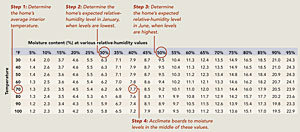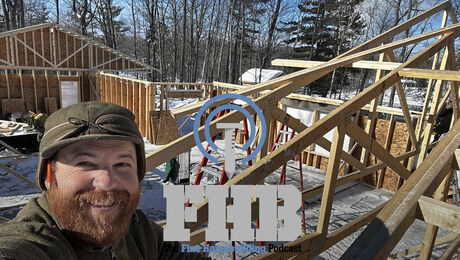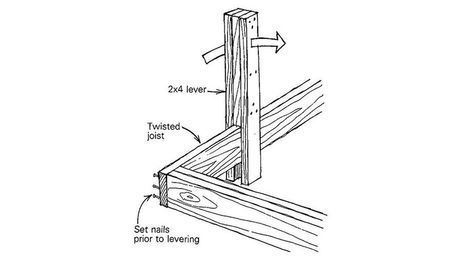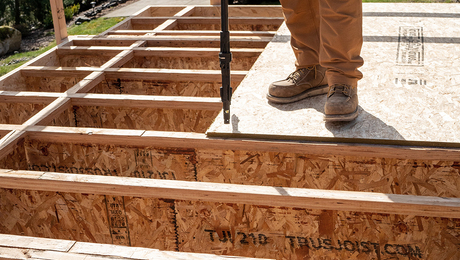How to Acclimate a Wood Floor Correctly
Knowing how to acclimate your wood floors before installing them can help prevent moisture issues down the road.
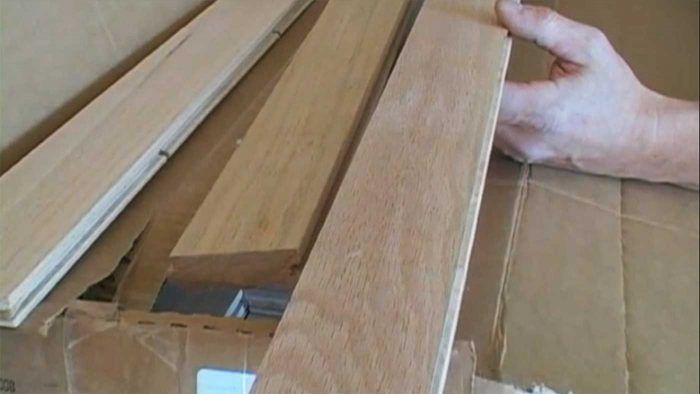
Acclimating a floor is the process of adjusting the flooring’s moisture content to correspond closely with the moisture content of the environment it’s being installed in. Acclimating wood flooring before installation prevents gaps between boards during dry conditions or cupping or tenting of boards when humidity goes up.
Not all flooring needs to be acclimated, though. Some engineered flooring comes wrapped in plastic at the manufacturer’s desired moisture level. For materials that do need to be acclimated however, these steps will ensure that flooring is set up to perform well right from the beginning.
From the truck to the subfloor
In remodels, flooring can be brought into the home as soon as there is space for it. In new construction, flooring should be brought into a home only after the HVAC system has been in operation for at least one week.
To speed up acclimation, I remove strip flooring from its boxes and spread it over a clean, dry subfloor that has been covered with a vapor retarder. I stack wide plank flooring in a pile with shims between each board to increase air circulation. Then, I weight the top of the pile to keep the boards flat. Depending on how much moisture needs to be added or removed from the boards, I add a humidifier or dehumidifier to the room. I then take moisture readings periodically on as many boards as I can.
Install flooring when it has the right moisture content
The interior temperature and relative humidity of a house determine the correct moisture content for a wood floor. Relative humidity can be measured with a humidity gauge, which can be bought at hardware stores, and ideally should fall between 30% and 50%. In a home kept at 70°F with that humidity range, flooring should be installed when it has a moisture content of 7.7%. Homes don’t always have ideal humidity levels or temperatures. It’s best to determine the expected relative-humidity range and interior-temperature range and acclimate your flooring to fall in the middle of the spectrum (chart below).
Environment and floor type can make acclimation tricky
Some homes have drastic swings in both temperature and relative humidity. Near the coast, for example, my house has a relative-humidity level of 30% and an average indoor temperature of 70°F in the winter. In the summer, when the doors and windows are open, the humidity level inside can spike to 78%. Engineered flooring or quartersawn flooring is the best choice for my home because they’re less susceptible to movement. I still acclimated my floors to the midpoint of my moisture range at 70°F, so I don’t have gaps in the winter or buckling in the summer. I install wide plank flooring when it has a slightly high moisture content. This provides extra room for floorboards to expand throughout the year.
4 Steps to properly acclimated boards
This chart, provided by the Forest Products Laboratory, indicates proper flooring moisture values with regard to relative humidity and interior temperature.
RELATED STORIES
